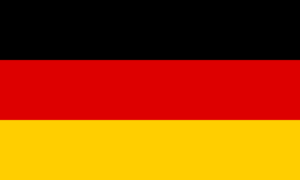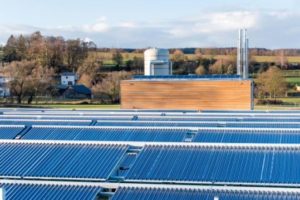Germany: Renewable District Heating Grants
October 27, 2017German politicians are beginning to appreciate the benefits of solar district heating, or SDH for short. Germany’s Ministry for Economic Affairs and Energy, BMWi, has launched District Heating Networks 4.0, a new subsidy scheme for grids which use solar, biomass or waste heat to meet at least 50 % of their customers’ annual demand. Since 1 July 2017, utilities and cooperatives have been able to apply for a grant covering up to 60 % of the cost of feasibility studies and up to 50 % of the investment in new networks. In late September, the BMWi also organised a workshop, Solar Heat in District Heating, during which planners and turnkey system suppliers reported on the good performance of recently completed SDH plants in the German town of Senftenberg and the city of Chemnitz (see photo).
Photo: Wagner Solar
Last August, a 5.8 MWth vacuum tube collector field (8,300 m²) started feeding hot water at 85 to 105 °C into Senftenberg’s district heating network. According to a presentation by Dr Rolf Meißner from Ritter XL Solar, the turnkey supplier of the collector field, the system – which uses water instead of glycol for heat transfer – had exceeded the predicted yield of 482 kWh/m² during its first year and only 1.5 % of this yield had been used for freeze protection.
Similarly, Thorsten Urbaneck, Professor at Chemnitz University of Technology and head of the university’s Thermal Energy Storage group, said that the 2,230 m² flat plate collector array commissioned in Chemnitz in August 2016 had not experienced any difficulties during its first year of operation. This system´s transfer fluid is pure water as well, which makes heat exchangers unnecessary and means that the same fluid flows through the collectors and the grid.
Grant scheme offers generous support
As has been the case with other German grant programmes, the new scheme is managed by the Federal Office for Economic Affairs and Export Control, BAFA. In addition to funding feasibility studies and subsidising investment costs, BAFA also supports promotional activities with up to EUR 200,000 to increase the customer base connected to a district heating network. Utilities can additionally apply for a grant of up to EUR 1 million for monitoring or optimising systems or for R&D-related activities.
A 12-page brochure (see the attached document in German) lists all the technical requirements for eligibility:
- At least 100 connected customers or 3 GWh annual heat supply
- Maximum grid supply temperature must not exceed 95 % at any time of the year
- Minimum 50 % of heat demand met by the use of renewables; biomass, however, must not cover more than half of that share
- Online monitoring for all relevant data
The investment grant consists of several components (see p. 5 of the attached Federal Gazette in German). The basic amount covers 20 % of the eligible investment costs (30 % in the case of small or medium enterprises). A sustainability incentive of up to 10 % of the investment will be paid if the district heating network shows a higher renewable energy or waste heat fraction than the required 50 %; applicants will receive 0.2 % for each full percentage point above the threshold.
The third component is a cost-effectiveness incentive for offering particularly low heat prices. If the utility achieves a calculated price below 100 EUR/MWh, it will receive an additional incentive of up to 10 % of the investment. The heat price will be monitored during the first five years after the incentive has been paid out. If cost effectiveness cannot be maintained, the money will have to be paid back.
Websites of organisations mentioned in this article:


